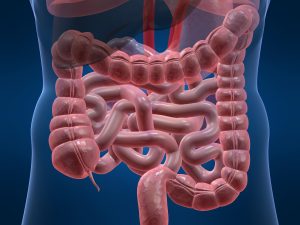
Leaky Gut, Chronic Disease, & Long Term Health
Leaky Gut This blog discusses the very important health issue of leaky gut. You will learn: What is the gut & the gut microbiome What
If you are a doctor or clinician looking to make a bigger impact on the world, have more job satisfaction and have up-to-date protocols and treatment solutions for your patients, check out our free functional medicine training led by functional medicine expert, Dr. Miles Nichols below.
Plus additional BONUS training videos on treating tough cases of brain fog and cognitive impairment!!
In this blog, we will look at treatment for Lyme Disease. You will learn:
Do your clients suffer from Lyme Disease and do you know how to treat it? Has their treatment for Lyme Disease been successful? If you are struggling with these issues, then this blog is for you. Please read on for the details! We train doctors and clinicians around the world in how to treat Lyme Disease. To learn more about studying with us to advance your clinical knowledge see here.
Do you get stuck clinically with chronic symptoms in your patients? Would you like to have a larger impact on improving your clients’ issues?
The key to treating disease is an individual approach using nutrition, lifestyle and exercise. To improve your patients’ quality of life, you need to identify and address each patient’s root causes. Our functional medicine course will teach you how to do this. Look into our functional medicine school here to have a greater impact on improving your client’s lives.
** Please note: If you want the short summary version of this article, then please click here **
What is Lyme Disease?
Lyme Disease is a bacterial infection, caused by Borrelia burgdorferi. Borrelia is carried by infected black-legged ticks and most commonly spread by a tick bite. We have written extensively about Lyme Disease in our blog. Start here with our blog on ‘What is Lyme Disease’?.
Lyme is a complex disease with both acute and potentially chronic symptoms. It typically, but not always, starts with a rash, headache, fever and chills. It can further develop into more serious symptoms such as possible arthritis, neurological or cardiac issues.
Unfortunately, Lyme Disease is not completely understood in the medical world. It is often missed or mis-diagnosed. When left untreated in its acute early phase, it can become chronic. Sometimes, treatment fails and it can still become chronic Lyme. Sometimes, a person goes undiagnosed for Lyme because they didn’t notice the tick bite and never went to the doctor. In all of these scenarios, a person can develop chronic long-term symptoms that will likely very much affect their quality of life.
Treatment for Lyme Disease?
Conventional Lyme Disease treatment relies on antibiotics. Doctors usually prescribe a course of antibiotics for 2 to 4 weeks (Feng J, 2020). Typically, three antibiotics are used to treat Lyme; doxycycline, cefuroxime and amoxicillin.
Two treatment guidelines exist for Lyme Disease (Rogerson AG, 2020):
** Basically, there isn’t really a consensus in the medical community on how to treat Lyme Disease. **
Usually, early antibiotic treatment shortly after infection is effective for eliminating symptoms. But antibiotics are not effective in removing Borrelia burgdorferi completely from the body. There is a high treatment failure rate of 10–35% of patients (Rogerson AG, 2020) is in patients who got an early diagnosis and went straight into antibiotics treatment. This does not include the people who were undiagnosed, misdiagnosed or simply didn’t even know they were bitten by a tick.
If the initial antibiotics treatment does not work, research shows that giving more antibiotics for a longer period of time is not effective (Rogerson AG, 2020).
If Lyme is not treated early or goes untreated, the bacteria multiply and spread to different areas of the body through the blood or the lymph. This causes symptoms to get worse and can affect quality of life (Rogerson AG, 2020). Even if Lyme disease is treated early, there is evidence that the Lyme can be removed from the blood by burrowing deeper into tissues only to reemerge and cause more severe symptoms later.
Are there any Alternatives to Antibiotics, in Conventional Medicine?
There is limited research on non-pharmaceutical therapies for chronic Lyme Disease (Maksimyan S, 2021). However, one small study was done on exercise. Patients with Lyme, who had symptoms persisting for at least three months, used resistance training (Maksimyan S, 2021). The patients had supervised resistance exercise training for four weeks (Maksimyan S, 2021). They experienced significant improvement in joint pain symptoms, exercise performance and the number of days they felt healthy and full of energy (D’Adamo CR, 2015).
Exercise could be a very promising non-pharmaceutical treatment for chronic LD and should be one approach to helping chronic LD patients.
Plus additional BONUS training videos on treating tough cases of brain fog and cognitive impairment!!
How does Functional Medicine Treat Lyme Disease?
** Recent research shows that 63% of patients experience persistent symptoms, even after antibiotic treatment for Lyme Disease (Feng J, 2020). **
This figure of 63% includes all patients with Lyme, caught at whichever stage, who took antibiotics as a treatment. Some of these people may have taken the antibiotics early on and some may have only tried antibiotics at a later stage in their disease process.
Given the poor treatment success rate for antibiotics, we need a new approach to treating Lyme Disease. Many factors come into play with Lyme treatment:
Given these multiple challenges, we need a multi-pronged approach to treat Lyme. We need to address bacterial infection, inflammation, the strength of the immune system and detoxification ability. We may need to look at Lyme co-infections. It is critical to also look into gut health. Remember that 70- 80% of our immune system is based in the gut and requires a well-functioning healthy gut. We may need to look for other root causes, such a HPA axis health, toxic exposure to mold or metals or other root causes.
If you or your patients have been struggling with Lyme for some time, it is crucial to find an expert in Functional Medicine who is also Lyme-literate. A Lyme-literate doctor is one who has experience and expertise in treating Lyme. We offer that in our Medicine With Heart clinic, where we have vast experience in working with very complex conditions.
Treatment for Lyme Disease in our Clinic
There are multiple modalities to employ in a complex case of Lyme. We assess each person on an individual case-by-case basis. Then we use some or all of the following techniques in a protocol designed to treat the Lyme Disease:
DIET – A first key step is to adopt an Anti-Inflammatory diet to fight the inflammation. What we eat can either reduce or increase inflammation and can affect the immune system response. In the case of Lyme, and every other illness, we want to have an anti-inflammatory diet that reduces inflammation and supports good health. This is true for optimal health as well.
We also need a nutrient dense diet to give the body the nutrients it needs to heal and to boost the immune system. It’s also important to have a diet that incorporates good gut health and promotes a healthy microbiome.
Gluten-free, dairy-free, sugar-free, organic, non-GMO whole foods is where we start. We recommend going all organic, especially for animal products. Eat lots of veggies and whole foods. We favor a Paleo-style or gluten-free Mediterranean diet.
And don’t forget to get sufficient hydration and drink clean, filtered water.
ANTIMICROBIAL HERBS – We most commonly treat with herbs which are antimicrobial, antibacterial or antiviral, meaning they can kill microbes, bacteria and viruses. Herbal medicine has a long history dating back almost 5,000 years (Feng J, 2020). Over centuries, herbal medicines have been shown to be safe in Ayurvedic Medicine and Traditional Chinese Medicine. Recent reviews in Europe and South America show that severe adverse events from herbs are extremely rare (Feng J, 2020).
One study looked at various herbs and natural antimicrobial agents to potentially fight Borrelia burgdorferi (Feng J, 2020). Seven herbs were highly active against Borrelia burgdorferi (Feng J, 2020). These seven herbs were more effective against Lyme bacteria than the antibiotic medications, doxycycline and cefuroxime (Feng J, 2020). They have strong activity against Lyme bacteria, and especially against the dormant persister bacteria, which are not killed by the current antibiotics used to treat Lyme (Feng J, 2020).
These seven herbs are effective against Lyme are (Feng J, 2020):
The herbs with the highest antibacterial activity against Borrelia burgdorferi are Ghanaian quinine and Japanese knotweed (Feng J, 2020):
In a separate study, Wild teasel, or Xu duan in Chinese medicine, showed anti-Borrelia properties, with strong antioxidant and antimicrobial activities (Saar-Reismaa P, 2022). It is anti-cancer, anti-inflammatory and has potential against Borrelia burgdorferi (Saar-Reismaa P, 2022).
We might also use herbs to combat any Lyme co-infections found to be present. Babesia is a Lyme co-infection. Certain herbal medicines have good inhibitory activity against Babesia (Zhang Y, 2021):
Essential Oils – One study looked at essential oils. It found that 10 essential oils have strong activity against Borrelia and against the persister forms of Lyme Disease (Feng J, 2018). These essential oils are based on garlic, myrrh, thyme, cinnamon, allspice, cumin and eucalyptus (Feng J, 2018). These essential oils were better at killing persister forms of Lyme bacteria than standard antibiotics (Feng J, 2018).
BIOFILM DISRUPTORS – As mentioned, Lyme bacteria can form biofilms. Biofilms are a protective defense mechanism the bacteria uses when under stress. They burrow into tissue and hide there. The antimicrobial medication or herbs cannot reach the bacteria once they are hidden in biofilm. There is actually more biofilm formation when bacteria are treated with antibiotics or other antimicrobial substances, because the bacteria try harder to escape the antimicrobials.
Biofilms are a big cause of persisting chronic Lyme Disease. So, getting to the root cause and destroying all of the biofilm involved is key to a successful Lyme treatment protocol. There are various substances that can break down biofilms, allowing the herbs or medication get to the pathogen(s) we are trying to treat for.
One interesting area is antimicrobial peptides or AMPs (Verderosa AD, 2019). A peptide is a small protein, made up of a chain of amino acids. They can be used therapeutically to help with different health conditions. We have previously written on peptide therapy. AMPs are peptides that kill microorganisms. Their antimicrobial mechanism of action is thought to be related to membrane disruption and inhibiting the activity of proteins and enzymes in the biofilm formation process (Verderosa AD, 2019).
LL37 is an antimicrobial peptide. It has antibacterial, antiviral, antifungal, antibiofilm and immune modulating properties (Wang G, 2019). At low concentrations, LL37 can reduce cell attachment to surfaces. At higher concentrations, it can decrease the overall thickness of established biofilms by up to 40% (Verderosa AD, 2019). We have previously written about LL37 here.
Stevia can help to eliminate Borrelia spirochetes and persisters. When tested against attached biofilms, Stevia significantly reduced the biofilm and is effective against Borrelia (Theophilus PAS, 2015).
Other antimicrobials can help to break down biofilms, including various herbs. Specifically, Otoba Bark extract and Cat’s Claw treat the various forms of Lyme bacteria and can reduce biofilms (Datar A, 2010). There is anecdotal evidence that these two herbs used in combination can be as effective as antibiotics (Datar A, 2010).
Antibiotics can also decrease biofilm size.
Finally, we also look to support IMMUNE HEALTH and GUT HEALTH when treating Lyme Disease. These are important to boost immunity, reduce inflammation and maintain a healthy gut microbiome. The anti-inflammatory diet we use helps gut and immune health.
LIFESTYLE HABITS –
What are Other Novel Approaches to Treating Lyme Disease?
Phage therapy (also called bacteriophage therapy) uses viruses to treat bacterial infections. The bacterial virus is called a phage. Each specific phage attacks a specific bacterium and is harmless to humans (Lin DM, 2017). Phage viruses selectively target and kill bacteria and are common in nature.
Phage therapy has been used for 100 years (Lin DM, 2017). It is not widely used nor well-known, primarily because not much research has been done with phage therapy on humans. But it is a potential alternative to antibiotics. And may be part of the solution for increasingly antibiotic-resistant bacteria.
Induced Native Phage Therapy or INPT is a type of phage therapy. In early research, it eliminates infections more quickly and efficiently than conventional treatment does. It is thought to have no side effects or risk to humans (Jernigan DA, 2021). It identifies and isolates specific complex electromagnetic signatures to get the phages to kill their host Lyme Borrelia bacteria (Jernigan DA, 2021). INPT can be considered a boost to the immune system to fight infections.
One small study looked at INPT in the context of Lyme Disease. In the study, 77% of patients with chronic, persisting, long-term Lyme tested negative for Borrelia infection after just two weeks of INPT treatment (Jernigan DA, 2021). Some people required longer INPT treatment. In the end, 92% of the Lyme patients were successfully treated with INPT (Jernigan DA, 2021). All patients experienced mild to substantial clinical improvements without side effects from INPT treatment (Jernigan DA, 2021). Phages against Lyme bacteria were induced and able to eliminate the targeted Lyme bacteria efficiently, with no harm to tissue or to the microbiome (Jernigan DA, 2021). There were no toxic or allergenic side effects in the patient group.
Based on this study and early research, INPT looks to be a safe, effective and innovative way to treatment Borrelia infection. INPT can be used alone or in conjunction with other modalities for LD treatment.
In Conclusion
Lyme is sometimes a diagnosis of exclusion where we rule out other diseases. In our clinic, we conduct a detailed analysis and search for the root causes of the symptoms. Then Functional Medicine principles can be applied to address the root cause issues to improve symptoms, especially if no treatable diagnosis has been found.
In our clinic, we have expertise in treating a range of complicated, difficult-to-diagnose conditions like acute and chronic Lyme Disease. We regularly treat and resolve Lyme, chronic infections and other complex conditions in patients in our Functional Medicine clinic.
** Please stay tuned for our next Blog! **
Does your current health situation look like this…
We specialize in finding answers and solutions for complicated chronic illness when people feel like they have tried everything. If this sounds like you, book a free call with us to see if we are the right fit for your health goals.






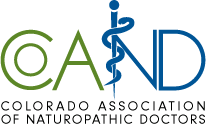

Leaky Gut This blog discusses the very important health issue of leaky gut. You will learn: What is the gut & the gut microbiome What
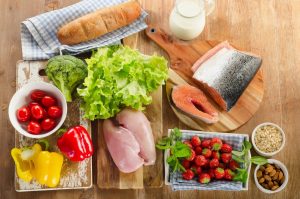
Research on Alzheimer’s disease is continuously looking for what causes the disease and how to better treat Alzheimer’s. A relatively new finding suggests that Alzheimer’s
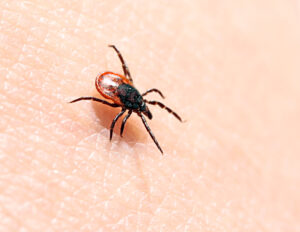
In this blog, we will look at Lyme Disease and answer the question ‘How does Lyme Disease become chronic?’ You will learn: What Lyme Disease
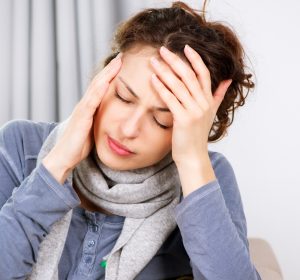
In this blog, we will look at the causes of Bartonella. You will learn: What Bartonella is and how it compares to Lyme Disease What

In this blog, we will look at the many symptoms of Bartonella. You will learn: What Bartonella is and what causes it What are the

In this blog, we will look at Bartonella. You will learn: What Bartonella is and how it compares to Lyme Disease How Bartonella is spread

In this blog, we will look at Lyme Disease and answer the question ‘Is Lyme Disease curable?’ You will learn: What Lyme Disease is How

In this blog, we will look at Lyme Disease and the growing threat that it has become. You will learn: What Lyme Disease is How

In this blog, we will look at Lyme Disease and mental health. You will learn: How and why Lyme Disease can affect mental health How

In this blog, we will look at cognitive impairment & Alzheimer’s Disease in relation to various lifestyle factors. You will learn: How lifestyle can affect

Alpha Gal Syndrome Today’s article outlines a condition that is thought to affect, conservatively, 3% of the US population. However, there may be many undiagnosed

Can Lyme Disease Cause Joint Pain? In this blog, we will look at Lyme Disease and joint pain. You will learn: How & why Lyme
There was a problem reporting this post.
Please confirm you want to block this member.
You will no longer be able to:
Please allow a few minutes for this process to complete.

